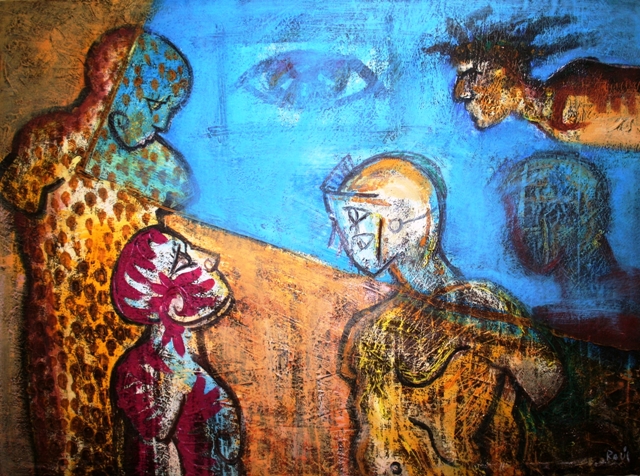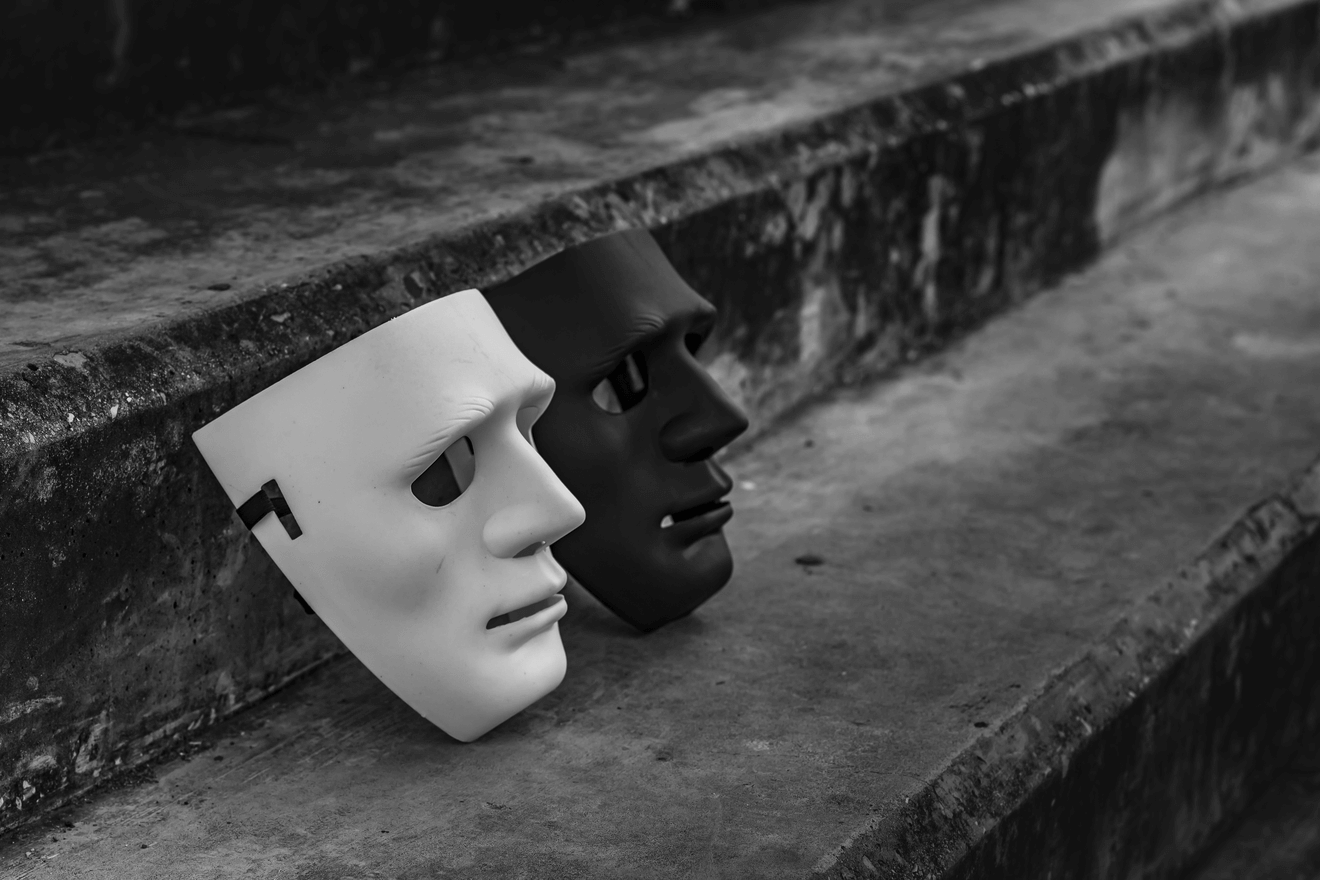
Early Christians referred to the Eucharistic elements, during ceremonial Mass, as “The Body and Blood of Jesus” which were represented symbolically as unleavened bread known as a communion wafer and red wine made from grapes respectively. The Didache, one of the earliest Christian texts outside the New Testament to speak of the Eucharist says, “Let no one eat or drink of your Eucharist unless they have been baptized into the name of the Lord, for concerning this also the Lord has said, “Give not that which is holy to the dogs.”

Ignatius of Antioch, a founding church father and the priest who would systematically compile the Bible as we now have it today, wrote to the Roman Christians in AD 106 saying: “I desire the bread of God, the heavenly bread, the bread of life, which is the flesh of Jesus Christ, the Son of God, who became afterward of the seed of David and Abraham, and I desire the drink of God, namely His Blood, which is the incorruptible love and eternal life.”
When the plate of unleavened bread and the cup of red wine are consecrated by the priest during Mass, the Catholic doctrine of transubstantiation is believed to have occurred. That is, they believe that an actual changing of the bread and wine into the nourishing substance of Jesus Christ himself has taken place. This is a symbolic ritual that demonstrates to all who observe, the faith of the followers’ belief in the word and teaching of the one true God and his only begotten Son whom he sent to save us from our sins through an ultimate sacrifice on the cross.
Dante Alighieri, who wrote The Divine Comedy, in the Purgatorio speaks of this idea of Formative Virtue. Dante explains to his readers, Formative Virtue is the part of the body’s blood that is responsible for sperm production and the energy transfer that is used to create life (Canto XXV). He explains that Formative Virtue never enters the veins and remains in the genitalia. The idea of Formative Virtue, which is a philosophy that closely resembles the transfer of DNA through the process of meiosis, demonstrates there was a remedial understanding in genetics and scientific knowledge by earlier Catholic followers that blood, as a life-giving force, was capable of transmitting genetic characteristics to offspring. Dante explains through his character Statius in Canto XXV, that the process of Virtue Informative occurs in the “natural vase” (a woman’s womb) when “that part of the blood that creates life” (sperm) enters. It is in this “vaginal vase” where the two types of blood intermingle to create another unique life. Like Sigmund Freud, it was also believed that the female played a “passive” part in all of this and that the male played an “active” role. And through the male’s “active” role, Formative Virtue would be created in the soul of the offspring when life first begins in the woman’s womb. Here we see the misogynistic theme of a male-patterned dominant authority that places the male at the head of the household, and the one being totally responsible for passing the virtues of his heart to his offspring since the females are “passive” to their male counterparts one and only authority. Thus, the logic seemed to be females fully lack this powerful capability of transferring divine knowledge or “divine goodness.”
Statius explains further to Dante, much like a sea-fungus, when the reorganization process takes place in the womb during early gestation, the power of Formative Virtue comes not from the female, but from “the powers whose seed it is.” That is, a sea-fungus will regenerate into another sea-fungus, likewise, a heart full of evil virtues will regenerate into another heart full of evil virtues. Like begets like. “Nature is intent on all its members.” This idea is expressed in Luke 6:43–45 when Jesus says “good trees produce good fruits and likewise, bad trees produce bad fruits.” Thus, the primal Motor, God, brings life into the soul by breathing intellectual life into it. “For without God, nothing is possible”.
It was believed that it was only through faith in God and Jesus Christ, through the study of the bible and one’s faith, one was capable of producing good fruit. As a result, the Motor or God, thru the active male role during copulation brings life into the soul of his offspring and creates three aspects of the soul; (1) Memory, (2) Intelligence, and (3) Will. When freed from our earthly bodies, early Catholics believed Memory, Intelligence, and Will becomes more active and upon death, the Informative Virtue of the body draws on the air around it to produce a visible aerial body or “ghostly” like an apparition. From this philosophy the doctrine of transubstantiation evolved and belief that the dead can walk among us on earth in an ethereal form. This is where belief in God is a schizophrenic symptom. Ghosts and God cannot be proven and so, according to the psychiatric community, represent classic schizophrenia.
Ideologically Motivated Violence
Sir John Falstaff. Sir John Falstaff is a fictional character in four of William Shakespeare’s plays; Henry IV (Part I), Henry IV (Part II), Henry V, and Merry Wives of Windsor. Sir John Falstaff’s character is based on the non-fictional character of Sir John Oldcastle who was a distinguished soldier that served in the Welsh wars and who became a martyr of the Lollards, a late medieval English sect derived from the teachings of John Wycliffe. Oldcastle was less Falstaff-like than how Shakespeare chooses to portray him. That is, as a fat, vain, boastful, and cowardly knight who spends most of his time drinking at the Boar’s Head Inn with petty criminals, living on stolen or borrowed money. However, Falstaff, like Oldcastle, was a friend of King Henry V. Oldcastle had befriended “Hal” in the Welsh wars in which both men served. Through the lens of medieval English politics, it is believed that Oldcastle was probably more widely perceived as a “criminal”.

In a confession of his faith, Oldcastle declared his belief in the sacraments and the necessity of penance and true confession, but he would not assent to the orthodox doctrine of the sacrament as stated by the Bishops, nor admit the necessity of confession to a priest. He also said the veneration of images was “the great sin of idolatry”, and, on 25 September, he was convicted as a heretic and sentenced to death for his beliefs but not before escaping several times and being re-captured several times until that faithful day on December 14. On 14 December 1417, he was hung over a fire that would consume the whole gallows. It was not clear whether or not he was burned alive or not.
What made Oldcastle so tenaciously successful in eluding English authority? Secrecy and supporters. The number one characteristic of any successful military campaign is “silent invisibility” and the ability to blend in within a crowd, and possessing secret supporters who hide their allegiance with you. This is how many successful undercover operations operate as well as the clandestine use of electronic targeted harassment and psychotronic torture, the only element that establishes similar types of acts as criminal, rests solely in the power of the ability of spies who keep your secret clandestinely covered up. How you justify killing or murder, even mass murder, depends on which philosophical lens you conduct your analysis.
Here we see a historical reference and a similarity to what we have come to know in modern history as “ideologically motivated violence.” In religious persecutions, where many are killed for adhering to their faith and disobeying the superior ruling orders or ruling class, can be perceived no differently. Religious or political persecutions/executions that are carried out by the more powerful ruling majority or powerless minority are nothing new to human history. We can view these as another example of how conflict is handled, a conflict that was moving towards a change or a revolution within the society by utilizing the enlightened knowledge of evolving philosophical thought based on a different interpretation of Orthodox religious philosophy and the true meaning of Christ’s teachings.
Thus, the transfer of values and virtues (aka Formative Virtue) are not, in fact, actually transferred to Christian followers who consume the consecrated “body and blood” of Christ during Mass. It is transferred during the educational process of learning and study, early child-rearing, and academic learning. This is where Ignatius of Antioch was fully committed to providing the future Christian community with a Bible that expressed, in his opinion, the best teachings and texts that had circulated following the crucifixion of Christ, with the ritual of Mass being more symbolic of the commitment made by Christian followers to Christ than an actual act of cannibalism. It symbolically demonstrates their learned faith and belief in Christ as the Son of God, it also demonstrates that they have digested the teachings of God and Christ and are attempting to actively demonstrate their beliefs to others through direct example. This is the beginning of the transubstantiation process, that process that transforms and elevates lowly men into a higher being with a higher purpose rooted in the best interest of the community and the Church. This is the food that Ignatius wanted future followers to “eat” and “digest”. You might say it was “food” capable of inspiring “ideologically motivated peace.”

Similar to the transfer of values and virtues, that is, the transubstantiation of formative virtue is the transfer of emotional states. Emotional states can be transferred to one another quite readily. Christ addressed this issue in Luke 6:29, “If someone strikes you on one cheek, turn to him the other also. And if someone takes your cloak, do not withhold your tunic as well.” This is a concept that is at the heart of “the cure” in psychoanalysis and the transfer of emotional states. It is the job of the analyst to guard against emotional triggers that may set him/her off. One of the first signs that a person has done the work of mourning is an objective awareness of how one thinks, and what one says, and how one acts, and if it is not validating or supportive toward another person or persons. I believe this is a continual process and one that is supported in faith-based learning practices that are continued throughout one’s life. It can be said similarly of the continual learning process through reading, writing, and study.






 Factors which are common to personalities in the paranoid spectrum include impediments to developing the will to be morally responsible, an abnormal or defective moral conscience, ineffective inhibitory mechanisms, the habitual use of aggressive and destructive strategies, and unique motivational and catalytic dynamics in which self regulation hinges largely on the use of aggression.
Factors which are common to personalities in the paranoid spectrum include impediments to developing the will to be morally responsible, an abnormal or defective moral conscience, ineffective inhibitory mechanisms, the habitual use of aggressive and destructive strategies, and unique motivational and catalytic dynamics in which self regulation hinges largely on the use of aggression.
